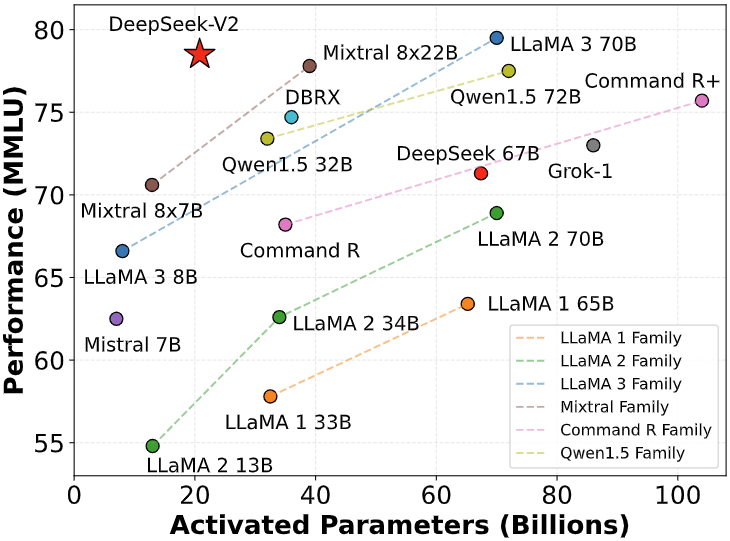The obstacle positioned to America by China's DeepSeek synthetic intelligence (AI) system is extensive, calling into concern the US' general approach to challenging China. DeepSeek provides ingenious solutions beginning from an initial position of weakness.
America believed that by monopolizing the usage and wiki.vst.hs-furtwangen.de advancement of sophisticated microchips, it would permanently maim China's technological advancement. In truth, it did not occur. The innovative and resourceful Chinese found engineering workarounds to bypass American barriers.
It set a precedent and something to think about. It might happen every time with any future American technology; we shall see why. That stated, American innovation remains the icebreaker, the force that opens new frontiers and horizons.

Impossible linear competitions
The concern lies in the regards to the technological "race." If the competitors is purely a linear game of technological catch-up between the US and China, the Chinese-with their ingenuity and orcz.com large resources- may hold a nearly overwhelming benefit.
For example, China produces four million engineering graduates annually, akropolistravel.com almost more than the remainder of the world integrated, and has a huge, bphomesteading.com semi-planned economy capable of concentrating resources on priority objectives in ways America can barely match.
Beijing has countless engineers and billions to invest without the immediate pressure for financial returns (unlike US business, which deal with market-driven obligations and expectations). Thus, China will likely always catch up to and surpass the latest American innovations. It may close the gap on every innovation the US presents.
Beijing does not need to scour the globe for developments or conserve resources in its quest for development. All the speculative work and monetary waste have actually already been performed in America.
The Chinese can observe what works in the US and pour cash and top talent into targeted tasks, betting logically on minimal improvements. Chinese resourcefulness will manage the rest-even without considering possible commercial espionage.

Latest stories
Trump's meme coin is a boldfaced cash grab
Fretful of Trump, Philippines floats missile compromise with China
Trump, Putin and Xi as co-architects of brave brand-new multipolar world
Meanwhile, America might continue to pioneer new advancements but China will constantly capture up. The US might grumble, "Our technology transcends" (for whatever reason), but the price-performance ratio of Chinese products might keep winning market share. It could thus squeeze US companies out of the market and America could find itself significantly struggling to compete, even to the point of losing.
It is not a pleasant situation, one that may just change through drastic measures by either side. There is already a "more bang for the dollar" dynamic in direct terms-similar to what bankrupted the USSR in the 1980s. Today, nevertheless, the US risks being cornered into the very same tough position the USSR once faced.
In this context, basic technological "delinking" may not suffice. It does not imply the US must abandon delinking policies, however something more detailed might be required.

Failed tech detachment
In other words, the model of pure and simple technological detachment might not work. China presents a more holistic obstacle to America and the West. There must be a 360-degree, articulated method by the US and its allies towards the world-one that integrates China under certain conditions.
If America is successful in crafting such a technique, we could envision a medium-to-long-term structure to avoid the danger of another world war.
China has perfected the Japanese kaizen design of incremental, marginal enhancements to existing innovations. Through kaizen in the 1980s, Japan wished to overtake America. It stopped working due to problematic industrial choices and Japan's rigid development design. But with China, the story could vary.
China is not Japan. It is larger (with a population four times that of the US, whereas Japan's was one-third of America's) and more closed. The Japanese yen was completely convertible (though kept synthetically low by Tokyo's reserve bank's intervention) while China's present RMB is not.
Yet the historic parallels stand out: both Japan in the 1980s and China today have GDPs approximately two-thirds of America's. Moreover, Japan was an US military ally and an open society, while now China is neither.

For the US, a different effort is now required. It must build integrated alliances to broaden international markets and strategic spaces-the battlefield of US-China competition. Unlike Japan 40 years back, China understands the significance of international and multilateral areas. Beijing is trying to change BRICS into its own alliance.
While it has problem with it for many factors and having an alternative to the US dollar worldwide role is unlikely, Beijing's newly found worldwide focus-compared to its past and Japan's experience-cannot be overlooked.
The US should propose a new, integrated development design that broadens the demographic and personnel pool lined up with America. It must deepen combination with allied countries to develop a space "outside" China-not necessarily hostile however unique, permeable to China only if it adheres to clear, wiki-tb-service.com unambiguous rules.
This expanded space would magnify American power in a broad sense, strengthen global solidarity around the US and offset America's market and personnel imbalances.

It would reshape the inputs of human and financial resources in the present technological race, thereby affecting its ultimate result.
Register for one of our totally free newsletters
- The Daily Report Start your day right with Asia Times' leading stories
- AT Weekly Report A weekly roundup of Asia Times' most-read stories
Bismarck motivation
For China, there is another historic precedent -Wilhelmine Germany, created by Bismarck, in the late 19th and early 20th centuries. Back then, Germany imitated Britain, exceeded it, and turned "Made in Germany" from a mark of shame into a sign of quality.
Germany became more educated, free, tolerant, democratic-and likewise more aggressive than Britain. China might pick this path without the aggression that caused Wilhelmine Germany's defeat.
Will it? Is Beijing ready to end up being more open and tolerant than the US? In theory, this might allow China to overtake America as a technological icebreaker. However, such a model clashes with China's historic legacy. The Chinese empire has a tradition of "conformity" that it struggles to get away.
For the US, the puzzle is: can it join allies more detailed without alienating them? In theory, this course aligns with America's strengths, but concealed obstacles exist. The American empire today feels betrayed by the world, specifically Europe, and reopening ties under brand-new rules is complicated. Yet an innovative president like Donald Trump might desire to try it. Will he?
The path to peace requires that either the US, China or both reform in this instructions. If the US joins the world around itself, China would be separated, dry up and turn inward, ceasing to be a risk without destructive war. If China opens up and equalizes, a core reason for the US-China conflict liquifies.
If both reform, a new international order might emerge through negotiation.
This article first appeared on Appia Institute and is republished with approval. Read the initial here.
Register here to comment on Asia Times stories
Thank you for signing up!
An account was already registered with this email. Please check your inbox for an authentication link.









